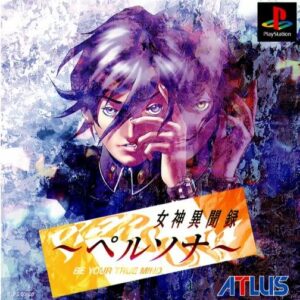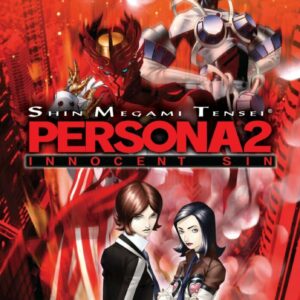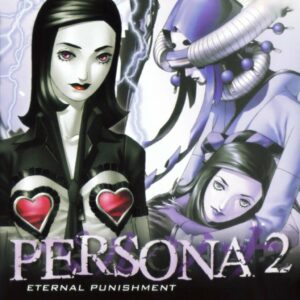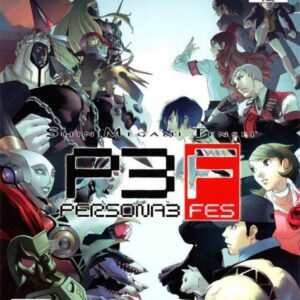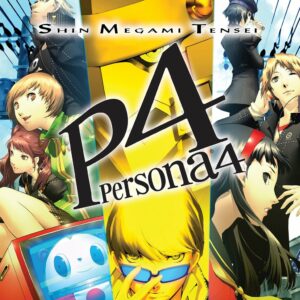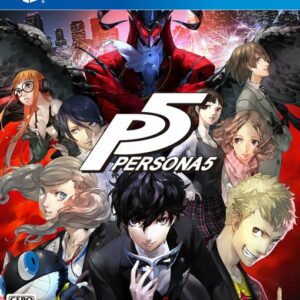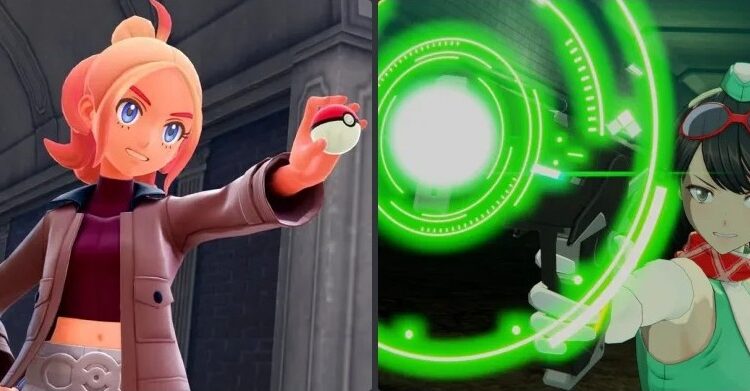It’s fall, the time to reconnect with your high school friends. Especially with a studious student council president, a model, a hacker, an aspiring painter, an heiress, a blonde punk, and a talking cat. Or maybe your group has a bear who wants to “score” with girls. Either way, you’re #Persona blessed.
The Persona franchise is celebrating its 25th anniversary this year and several of the games are being re-released. As I was watching the Lotus Juice Good Vibes concert and the second song played — which was Persona 4’s “Backside of the TV” — I wondered what makes the Persona games so appealing. What makes us want to immerse ourselves in the world of Persona? How do we play for 75 hours or more, (I put in 300+ into Royal on my first playthrough), and still crave a second playthrough? Why does hearing the phrase “I am thou and thou art I” excite us? Not to mention that we all have our favorite character or waifu from each series.
Let’s start with a brief history of Persona.
The Sea of Unconsciousness
The Persona series was created by Atlus and started as a spinoff of their popular Shin Megami Tensei series. Shin Megami Tensei (1992) is an original take on Atlus’ Digital Devil Story: Megami Tensei (1987) game, which was based on Aya Nishitani’s Digital Devil Story novel series. There’s also a Digital Devil Story OVA that follows the first novel.
The Shin Megami Tensei games revolve around characters dealing with a global apocalyptic event, fighting demons and agents of Law and Chaos. The spinoff Shin Megami Tensei If… takes that formula and scales it down to a high school setting and was the prototype for Persona games to come.
Persona involves high schoolers overcoming their own personal trauma and demons to fight deities and save humanity by giving us our ideal reality. The first game in the series is Megami Ibunroku Persona or Revelations: Persona which was released in Japan on September 20th, 1996. It came to the U.S. on December 14th, 1996.
Next came Persona 2: Sin, better known as Persona 2: Innocent Sin, which saw its Japanese release on June 24th, 1999. The U.S. version came out for the PSP on September 20th, 2011. Persona 2: Eternal Punishment is the third entry in the series and a sequel to Innocent Sin. It hit Japanese PlayStation consoles on June 29th, 2000, and the U.S. on November 30th, 2000. Both games are direct sequels to Revelations: Persona.
Persona 3, the fourth game, revolutionized the series on July 13th, 2006. This game introduced the social link system, which has become a standard for the series. An upgrade and a port for the PSP followed. Persona 3 FES debuted on April 19th, 2007, in Japan and a year later in the U.S. on April 22nd. The PSP port, aka Persona 3 Portable, found a new life in Japan on November 1st, 2009, and in the U.S. on July 6th, 2010. This version of the game includes an optional female protagonist, various combat improvements, and visual-novel-style cutscenes instead of animated ones.
On July 10th, 2008, the fifth entry, Persona 4, graced Japanese PlayStation 2 consoles with its murder mystery story. It wouldn’t be until December 9th, 2008, that U.S. PlayStation owners could play the game. Four years later, on June 14th, 2012, an enhanced version called Persona 4 Golden, was released for the Japanese PlayStation Vita. The U.S. version arrived on November 20th, 2012. I’m currently playing the Steam version, which became available on June 13th, 2020.
The popularity of Persona 4 led to the creation of the spinoff fighting game Persona 4 Arena and its sequel Persona 4 Arena Ultimax by Arc System Works. Persona 4 Arena debuted in Japanese arcades on March 1st, 2012. Home consoles received it in July and August 2012 for Japan and the U.S. respectively. Persona 4 Arena Ultimax or Persona 4: The Ultimax Ultra Suplex Hold in Japan was my first of the Persona games because I was a big fan of Arc System Work’s fighting games. It’s both a sequel and an update to the original. The game’s mechanics didn’t disappoint, but what I didn’t expect was to fall for the characters, and that was when my Persona fever started.
Since I was late to the party, my first true Persona game was Persona 5. It was released on September 15th, 2016, in Japan and on April 4th, 2017, in the U.S. The upgraded version, Persona 5 Royal, came to the Japanese PS4 on October 31st, 2019, and to the U.S. on March 31st, 2020. On February 20th, 2020, a quasi-sequel called Persona 5 Scramble (or Strikers) was released for the PS4 and Switch. A year later, on February 23rd, it saw its U.S. release.
Persona Spinoffs
The most prominent spinoffs of the Persona games are Persona 4 Arena and Persona 5 Strikers, which I’ve already mentioned, and the dancing games. Persona’s dancing game titles include 2015’s Persona 4: Dancing All Night, Persona 3: Dancing in Moonlight, and Persona 5: Dancing in Starlight, the latter two released simultaneously in 2018.
In 2014 and 2018, Persona Q: Shadow of The Labyrinth and Persona Q2: New Cinema Labyrinth came to the 3Ds with their Etrian Odyssey dungeon-crawler gameplay.
The lesser-known and more inaccessible spinoff games are the Japanese mobile and PC titles. These include: Megami Ibunroku Persona Digital Collection, Megami Ibunroku Persona: Ikuu no Tou Hen (Alternate Goddess Tale Persona: Otherworld Tower Chapter), Persona 2 Tsumi: Lost Memories, Persona 2 Batsu: Infinity Mask, Persona 3: The Night Before, Persona 3 Em, Megami Tensei Chaining Soul: Persona 3, Megami Tensei QIX: Persona 3, Aegis: The First Mission, Persona 3 Broken Shadow, Persona 3 Illust Puzzle, Persona 3 Escape, Persona 3 Social, Persona Ain Soph, Persona 4 The Card Battle, Persona Mobile Online, and Persona O.A.
On a side note, 2018’s Blazblue Cross Tag Battle features characters from Persona 3 and 4 since it stars characters from other fighting games created by Arc System Works.
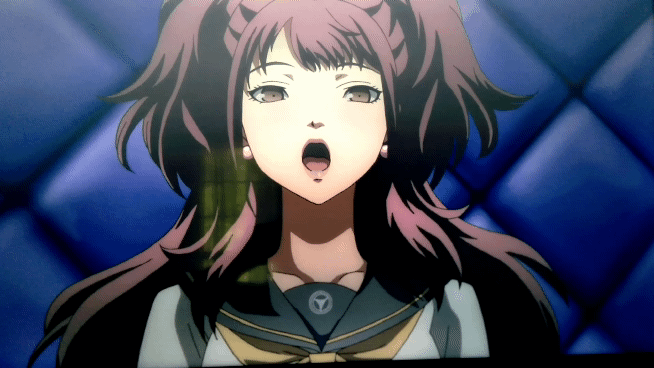
Spoilers ahead for anyone who hasn’t played any Persona games.
I Am Thou, Thou Art I
The characters of the Persona series range from corporate heiresses to detective princes to android schoolgirl super weapons, plus a bunch of regular people just trying to have a normal life. Even the otherworldly Velvet Room characters, all named after characters from Mary Shelley’s Frankenstein, are memorable.
We all have our favorites from this eclectic group. Some of my favorite Persona ladies are Persona 3’s Yukari Takeba, Persona 4’s Chie Satonaka, and Persona 5’s Futaba Sakura. An honorable mention goes to Sadayo Kawakami from Persona 5.
Beyond being kawaii, they have depth and the potential for post-game growth. For example, Persona 5’s Futaba Sakura is a hikikomori (shut-in). When first introduced, you learn a lot about the physical and mental abuse she suffered at the hands of adults who weren’t concerned about her well-being and who took away her two most precious things: her mother and her mother’s love. These, plus her own insecurities, lead to her agoraphobia. Through her storyline, the protagonist can help her become more comfortable with crowds and people.
In Persona 5 Strikers, which takes place several months after the original Persona 5 ending (not Royal’s), Futaba has enrolled in school and can go out by herself, mostly without problems. Character development like this creates empathy and allows you to root for the character through their highs and lows.
Another reason Persona characters are lovable is their quirkiness. The galactic punting Chie Satonaka is a good example of this. Chie is a typical high schooler. She loves kung fu, meat, and giving her friend Yosuke a hard time. Chie is especially fond of a good steak. She even buys a product called meat gum, which you get from her during a quest. Chie is a kung fu fangirl too, and a self-taught practitioner. She models herself after Bruce Lee and uses his quote “Don’t think, feel” from Enter the Dragon. Her favorite movies include The Trial of the Dragon series and Legend of Seriyuu, which has at least three movies in it. Chie gets romance advice from the third movie when the main character invites her to his house on Christmas Eve. Despite it being a Christmas movie, with a kung fu fighting Santa Claus, she realizes it’s not what she needs. Chie is more than just comic relief though. Like every Persona character, she has her own insecurities which can potentially hold her back.
In part two, I’ll cover the themes and music of the Persona games. Keep an eye on the Midnight Channel for more Persona goodness.


